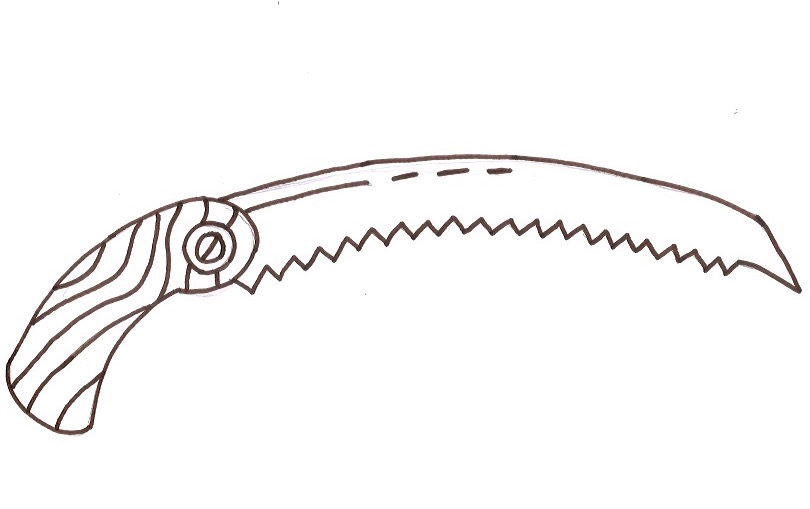In David George Haskell’s book The Songs of Trees, we listen to the author’s story of an ancient fire he visits inside the Reika-do Eternal Fire Hall. The fire has been burning in Japan for some twelve hundred years on the island of Miyajima. The fire was started by Kobo-Daishi, the founder of Shingon Buddhism, on his hundred day ascetic retreat to the mountaintop after returning from China in 806 (Haskell, 242).
Sometime in 1625, not far from where Kobo-Daishi’s ember sparked this flame hundreds of years prior, a Japanese white pine “sapling was dug up and taken to the mainland. There it was grafted onto the roots of the more hardy black pine and gradually sculpted into a bonsai tree…For 350 years one family, the Yamakis, cared for the tree, continuing for many generations the work of their ancestors. In 1945 the garden wall of the Yamaki family compound in Hiroshima saved the tree from the blast of the atomic bomb. The home was three kilometers from the epicenter, so walls stood, even though windows exploded and lacerated members of the family, who were all inside. The tree remained in Hiroshima until 1976, when it made the reverse journey of the Enola Gay. The Yamaki family and the Japanese government presented the tree to the United States to mark the country’s bicentennial,”(Haskel, 243).
The historic bonsai tree is now housed in a collection at the U.S. National Arboretum in Washington D.C.
The story of this little tree is epic, mystic, and spiritual; a four-hundred year dedication of absolute ritual, complete devotion and care. Plucked from a monastic mountainside already storied with powerful spiritual presence, and ushered into a life of simple, unwavering process and culture. Not even the devastating atomic bomb could uproot it. And to think: once all that smoke settled the tree’s last journey was sailed on the water’s of peace to a country that dropped the seed of demolition. For all it lacks in physical size, the Yamaki bonsai is a giant tale. And a great contemplative example of tree care.
This sparks a curious thought: imagine only caring for one tree for four hundred years. For the Yamaki family it was a reality, a tradition unbroken by the tremors of history. This type of care is rooted in the ascetic approach of process- discipline and simplicity-echoing the same ideals that Kobo-Daishi illuminate on the mountain side. Complete dedication to one process; this ultra-focus leads to simplicity, a shedding of the unnecessary in order to reach enlightenment. It is once again that recurring theme I’ve written of before, the universal contained in the specific, and vice versa. The whole world in one hot flame.
The one tree we care for. The place of practice everyday. The rhetorical bonsai. It could be anywhere in the world, on a beach, next to a busy street, in a small clay pot in a sunroom or in someone’s back yard garden. A tree is a tree anywhere. All trees have basic needs, and of course those things fluctuate given species and location; but all trees need the same things: sunlight, water, carbon dioxide and nutrients. Although they fluctuate in different amounts and different intensities, these are the key biotic themes in the story of trees. Whether we are working a large crown cleaning, or a cable installation, or a root-collar excavation; it is the same conversation with nature: what is it that you need, and how can I give it to you.
It is true that trees live for hundreds, if not thousands, of years in the forests and wildernesses of this world untouched by human hands. By themselves they are left to toil in the biological battle of the wild. But when trees are connected to people either by care or culture or oral tradition, those trees become a part of the human story, just as much as people become a part of the tree’s story. In thinking about the Yamaki Pine, it is the human hand alone that has kept the tree alive over many hundreds of years, from the time it was pulled from near the warm camp fire of Kobo-Daishi to it’s current home at the U.S. National Arboretum. The process of tiny pruning snips, daily offerings of water, delicate direction of crown architecture with carefully placed wires and little braces, tenderly managing the and refreshing the root system so it is happy and comfortable in its little clay tray snuggled in the soil medium. This bonsai is not just a cozy little tree, it is a long conversation between people and nature; it is a connection of lives, of nations and of history that reaches far across the human spectrum. Like Kobo-Daishi’s fire, the bonsai tree is a harnessing of nature. It is one particular instance in which we see that trees and people certainly can not live without each other. This type of tree care is a story of hope, an offering of care and love even under the looming darkness of conflict and suffering. It is a union for better or worse. It is another wonderful metaphor to life.
Haskell writes, “attention to the inner ‘nature’ of the nonhuman, combined with close listening to the accumulated knowledge of many human generations, continues in later Japanese horticultural treatises. Shingen’s fifteenth-century writing and sketches on landscape design, sometimes attributed to the eleventh-century priest Zoen, insist that ‘if you have not received the oral transmissions [teachings from older masters], you must not make gardens.’ A gardener must integrate this knowledge with ‘full attention’ within the garden to the orientations of rocks, the movements of birds, and the form of tree limbs. Reverence, respect and attention are the author’s themes, not control,” (251).
From this excerpt we can see how important tradition is in cultivating plants, landscape design, bonsai and arboriculture. Working with nature is a conversation with nature, a conversation with ourselves and with our teachers. Our own cultural practices come from the masters before us, our mentors and colleagues who told us their sacred stories. Like the Yamaki Pine or Kobo-Daishi’s campfire, the traditions we practice are given to us in the hope that we will fan the flame and give them again to those that will listen and want to tell the story again. This is the legacy of arboriculture, a rich and colorful story between trees and people.
Arboriculture is an ancient campfire tale. Around which we sit, faces aglow with reverence, respect and attention.





Leave a Reply
Your email is safe with us.